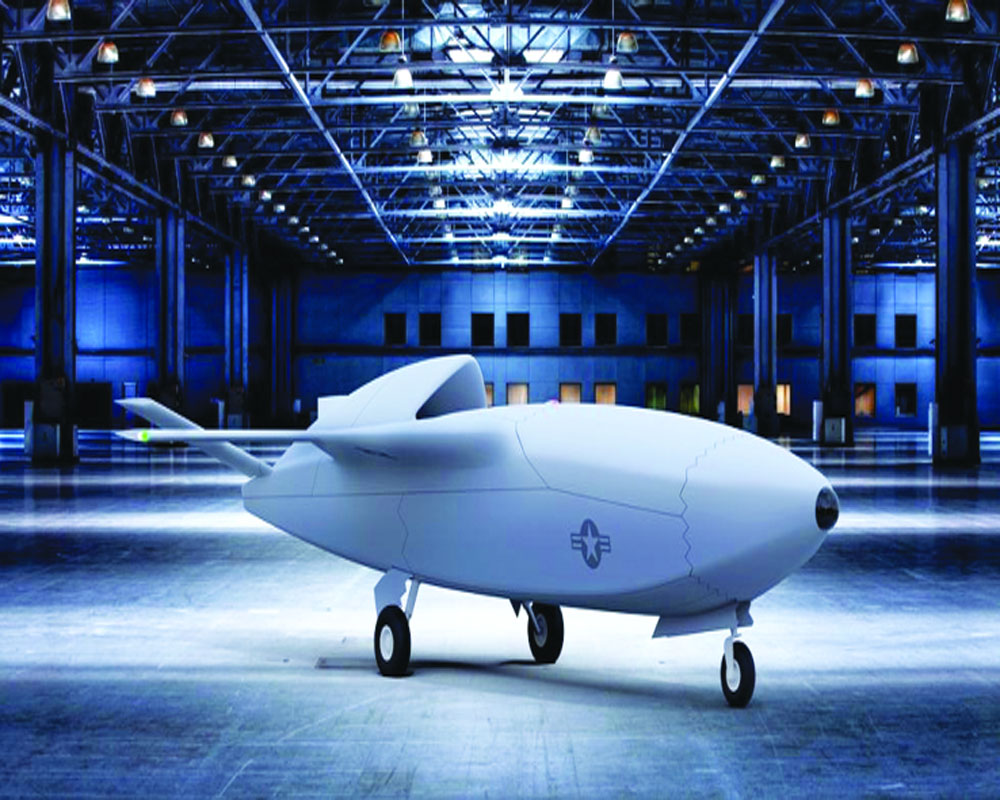Real-time systems using AI for navigation and guidance, coordination, self-healing, target identification and acquisition & munition delivery systems are a strategic asset. Drone warfare is asymmetric and is almost mainstream. A bit like guerrilla warfare as it is low cost. Drones are dispensable; off the shelf commercial technology can be used, say Bhargav and Aveek Sen
Command, control, communications and intelligence, surveillance and reconnaissance (C4ISR) are becoming a most essential element in modern military operations. Countries with artificial intelligence powered drone have baffled their enemies in the war zone. AI powered drone swarms are the new tool of warfare and as of now are unregulated by weapons control regulations.
Though Israel and Turkey have successfully used them, India too is not far behind. On November 17, 2021, the Defence Research and Development Organisation (DRDO) demonstrated offensive capabilities of its drone swarms at a three-day “RashtraRakshaSamarpanParv” in Jhansi. It was impressive.
The country that makes advances quickly joins an elite club that might evade future restrictions.
“The DRDO demonstrated fully operational decentralised UAV (unmanned aerial vehicle) swarm comprising 25 drones flying coherently with minimal human intervention, during Rashtriya Raksha Samarpan Parv during Jhansi Jalsa,” reported PTI.
In mid-May 2021, the latest developments on these weapons systems occurred when the Israel Defense Forces (IDF), during the recent clashes in Gaza, used a swarm of AI drones for the first time to geolocate, target, and strike Hamas members.
Israel is making major advances in AI-driven technology.
The IDF did debut “drone swarms to seek and attack hidden targets” in the May war in Gaza. The Ghost Unit, which is part of the Paratroopers Brigade, has been using “packs of drones”. The IDF used a swarm of AI-guided drones and supercomputing to comb through data and identify new targets within the Gaza Strip. It is thought this is the first time a swarm of AI drones has been used in combat.”
The drones used so far are navigated in two ways — either remotely piloted or autonomously piloted with GPS and inertial navigation systems.
Autonomous drones have terrain matching capability. They use information from the cameras along with AI for navigation without being dependent on GPS, which is vulnerable to cyber-attacks.
A drone swarm can be modelled as a flying wireless grid, where each drone is capable of using and sending information to the others in the swarm. Converting data into actionable real-time information is done using AI. The reaction time in a battlefield must be less than the reaction time of the enemy elements. Therefore, swarm drones assess the threat to the swarm and at the same time identify the target to manoeuvre to achieve the desired strike, adjusting according to any losses they suffer.
There can be some sort of task sharing, where some of the drones would undertake target detection, others to counter the enemy air defence, some more counter the interference of enemy radars and electronic signals, and others will carry out the attack by bombing. In a dynamic environment, this autonomous coordination is done with the help of AI technologies.
Some inferences:
1. Drone warfare is asymmetric and is almost mainstream. A bit like guerrilla warfare as it is low cost. Drones are dispensable, off the shelf commercial technology can be used.
2. Autonomous drone systems separate the big boys from the rest. A study in the USAF found that remote drone piloting for long hours induces fatigue. Fatigue leads to suboptimal performance. Fire and forget autonomous drone systems are therefore huge force multipliers.
3. Real-time systems using AI for navigation and guidance, coordination, self-healing, target identification and acquisition & munition delivery systems are therefore a strategic asset.
Jyoti Sinha, CTO at Omnipresent Robot Technologies Pvt. Ltd, explains how DRDO’s demonstration is significant. Omnipresent leverages and augments its experience of working on DARPA LANdroid programme to develop palm size ground swarm robots while working in the US.
“I congratulate DRDO for developing the first fully functional swarm drone network for tactical and real time support to our armed forces. We would be happy to collaborate with DRDO and leverage our experience of swarm robotics where we have extensively tried to provide solutions to the swarm formation, ad hoc network and drone autonomy piece.”
She adds, “In tactical warfare, AI powered swarm drones can carry out simultaneous destruction and dismantling of multiple targets using precise swarm configurations and hover localisation even when less sophistication is available with guided defence equipment. In other situations, it can even be an ‘omni-directional attack’ where the swarm drones can target one attack from numerous angles. While targeting enemy frontlines, even if some of the drones are attacked, the cognitive AI algorithms kick in and reconfigure the drone network positioning to maintain situational awareness and aid in completion of mission. Using AI, any individual drones in a swarm network can be trained to operate in offensive or defensive mode by switching roles such as decoy, sensor, attacker or just communicator depending upon its positioning and remaining resources.”
(Bhargav is an ex-IAF officer from the Aeronautical Engineering (Electronics) branch, and is now an M&A adviser for tech companies. Aveek Sen is an independent journalist working on cyber security and the geopolitics of India’s neighbourhood, focussing on Pakistan, Afghanistan, Iran and Bangladesh.

























